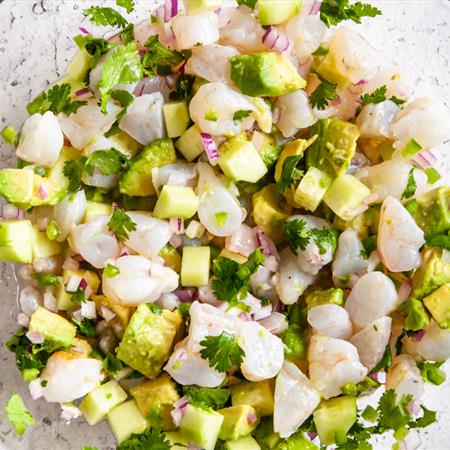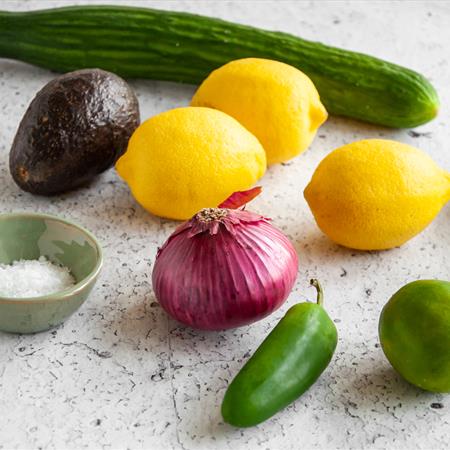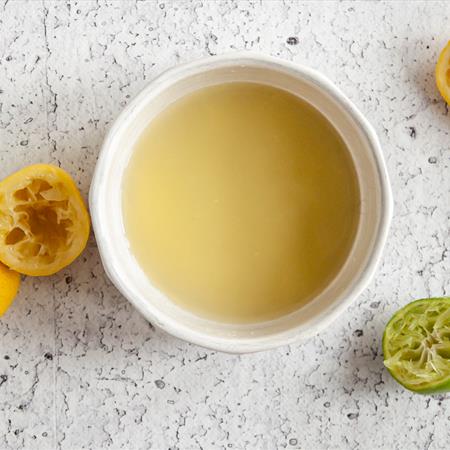All About Ceviche: Our Favorite Summertime Seafood Appetizer
Everyone loves a no-cook dish in the summer that’s easy to throw together. Ceviche is just that—a fresh, delicious, and nutritious meal perfect for warm weather, and takes little time to prepare. Since there’s no cooking or heating required, it’s great to pack for picnics and summer pool parties.

What is Ceviche?
Ceviche is a traditional Peruvian dish that is a mixture of fish, fruits, and vegetables in an acidic marinade of citrus juices—usually some combination of lime, lemon, and/or orange. It is typically made with very fresh, raw fish. The citrus juice mixture essentially “cooks” the fish without actually cooking it. Because citrus juice is highly acidic, the reaction causes the fish to turn firm and opaque as it would if it were cooked.
Is it Safe to Eat Raw Fish?
While there is some risk of foodborne illness from eating raw fish, it is relatively safe to eat raw fish. To minimize the risk of illness, you should try to pick out the freshest, highest quality fish possible.
You’re actually even better off choosing seafood that was previously frozen. Shrimp is often flash-frozen, meaning it’s frozen immediately after it’s harvested, so it’s at peak freshness when frozen and freezing preserves that freshness. Freezing seafood also will kill any parasites that the fish may contain.
Also, with its high acidity, the citrus juice in ceviche will actually kill many of the harmful bacteria. So, while this does not completely eliminate the risk of foodborne illnesses, it’s a small risk and akin to eating fish that has been cooked to a medium temperature as opposed to well-done.
If going raw intimidates you, pre-cooked shrimp absolutely works in our ceviche recipe. You can either purchase cooked shrimp or cook it yourself. If you are cooking the shrimp, it should be well chilled after cooking before using in ceviche.
To eliminate risk of foodborne illness with any seafood, you’ll want to keep it as cold as possible. This holds true whether the shrimp is raw or pre-cooked and you are holding it cold. Keep the shrimp over a bowl of ice or in the refrigerator whenever possible.
What Does Ceviche Taste Like?
The taste of ceviche is reminiscent of summer or tropical islands, especially when adding tropical fruits like mango or pineapple. It’s so incredibly refreshing! Typically, ceviche also contains a little bit of spice too, from jalapeno or serrano chiles, which complement the sweet shrimp. There’s also a pleasant variety of textures between the crunchy red onion, crisp cucumber, soft and chewy shrimp, and creamy cool avocado.

Ceviche is bursting with fresh, acidic flavor. Citrus is one of the main flavor components of ceviche that make it so zippy and refreshing. Since the citrus juice is so integral to the flavor profile of ceviche, we highly recommend using fresh citrus juice in this recipe for its vibrant flavor. Another perk of juicing whole lemons and limes is that you can use some of the zest for added flavor or as a garnish.

How to Make Ceviche
- Prep Ingredients
The first step of making ceviche is to gather all of your ingredients and prep them by chopping and in some cases, peeling. The shrimp can be left whole or chopped into bite-sized pieces, depending on your preference. We prefer to chop all of the other ingredients into small pieces, about ½ inch or smaller, so that you get a little bit of everything in every bite and leave the shrimp a bit larger. Remember to store the shrimp in the refrigerator or over an ice bath while you are prepping the other ingredients.
To prep the shrimp, you will need to peel it if it’s not already peeled. If you’re working with raw shrimp, you’ll want to devein the shrimp or remove the dark line running on the outside and inside of the shrimp. This can easily be removed by lifting up with a paring knife.

- Combine and Marinate
Next, combine all of the ingredients together in a bowl, and toss to coat evenly with the citrus juices. It’s important to use either a glass or ceramic bowl since those materials are non-reactive. Bowls made of metal or certain types of plastic may interfere with the chemical reaction from the acidic marinade and leave an unpleasant taste. We usually add the avocado last and gently fold it in, especially if it’s very ripe, so that it holds its shape better.
After you add all of the ingredients, cover with a lid or plastic wrap and place the bowl in the refrigerator. We recommend stirring every 5-10 minutes to ensure that all of the shrimp is evenly coated with the citrus marinade and it “cooks” evenly.
You will be able to see the changes in the shrimp as it marinates if you use raw fish. Raw shrimp is transparent and grayish, and it turns increasingly opaque and pink from the acid breaking down the proteins. The texture also changes and becomes firmer, so it almost tastes like it’s cooked, too.
This dish is best prepared immediately before serving. The ideal marinating time is just 20-30 minutes. If you let it sit for too long, the fish can become overly tough, or “over-cooked.”
- Serve Chilled
This dish is typically meant to be served as an appetizer, but it also works great for a light summer dinner. Serve the prepared ceviche alongside lettuce wraps, or as a dip with tortilla chips or plantain chips.

If you are travelling with this dish, make sure to transport it in a cooler filled with ice or ice packs to keep it cold.
Variations
We like to use shrimp in this recipe since it’s a crowd-pleaser and it’s easy to find. However, you can use many other types of seafood in ceviche. In fact, sea bass is most traditional in Peru. In different parts of the world, you can find ceviche made with halibut, sole, scallops, clams, or oysters.
Like shrimp, bay scallops are a great choice for ceviche because of their sweetness. Their small size makes them easy to prep for ceviche and ensures the seafood is spread evenly in the dish and you get some in every bite.
You can also alter the flavors in ceviche based on your personal preferences. The key ingredients are the fish and the citrus juice. After that, it’s up to you. If you don’t like too much spice, you can omit the jalapeno, or if you want to add more heat, you can add some hot sauce. Tropical fruits like mango and pineapple make great additions that complement the flavor profile of ceviche.
Try Our Orginal BigOven Original Recipe:
Shrimp Ceviche
Get the Recipe!






